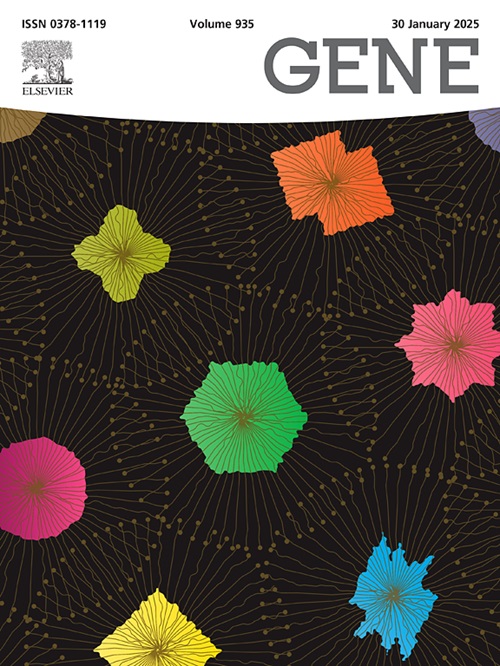Investigation and validation of neurotransmitter receptor-related biomarkers for forecasting clinical outcomes and immunotherapeutic efficacy in breast cancer
IF 2.6
3区 生物学
Q2 GENETICS & HEREDITY
引用次数: 0
Abstract
Purpose
The prognostic role of neurotransmitters and their receptors in breast cancer (BC) has not been fully investigated. The aim of this study was to construct a survival model for the prognosis of BC patients based on neurotransmitter receptor-related genes (NRRGs).
Methods
BC-related differentially expressed genes (DEGs) were screened and intersected with NRRGs. GO, KEGG and PPI analyses were performed. Univariate Cox, Least Absolute Shrinkage and Selection Operator (LASSO) and multivariate Cox regression analyses were used to construct prognostic models for biomarker expression levels. The model was validated using an external validation set. The receiver operating characteristic curves (ROC) for diagnostic value prediction and clinicopathologic characteristic nomogram were constructed. qRT-PCR was used for further in vitro validation experiments.
Results
Forty-five overlapping genes were obtained by intersecting BC-related DEGs with 172 NRRGs. Univariate Cox, LASSO and multivariate Cox regression analyses were used to construct prognostic models for the expression levels of biomarkers including DLG3, SLC1A1, PSCA and PRKCZ. The feasibility of the model was validated by the GEO validation set. ROC curves were established for diagnostic value prediction. Patients in the high-risk group had a worse prognosis, higher TMB score, higher probability of gene mutation, and higher immune cell infiltration. RiskScore, M, N and Age were strongly correlated with survival. The mRNA expression levels of DLG3, PSCA and PRKCZ in the BC group were significantly higher than those in the control group.
Conclusion
Risk prediction model based on DLG3, SLC1A1, PSCA and PRKCZ, which are closely related to BC prognosis, was successfully constructed.
研究和验证神经递质受体相关生物标志物预测乳腺癌临床结局和免疫治疗效果。
目的:神经递质及其受体在乳腺癌(BC)预后中的作用尚未得到充分研究。本研究旨在建立基于神经递质受体相关基因(NRRGs)的BC患者预后生存模型。方法:筛选bc相关差异表达基因(DEGs)并与NRRGs交叉。进行GO、KEGG和PPI分析。单变量Cox、最小绝对收缩和选择算子(LASSO)和多变量Cox回归分析用于构建生物标志物表达水平的预后模型。使用外部验证集对模型进行验证。构建诊断价值预测的受试者工作特征曲线(ROC)和临床病理特征图。采用qRT-PCR进行进一步的体外验证实验。结果:将bc相关deg与172个NRRGs相交,得到45个重叠基因。采用单因素Cox、LASSO和多因素Cox回归分析构建DLG3、SLC1A1、PSCA和PRKCZ等生物标志物表达水平的预后模型。通过GEO验证集对模型的可行性进行了验证。建立ROC曲线进行诊断价值预测。高危组患者预后较差,TMB评分较高,基因突变概率较高,免疫细胞浸润较高。RiskScore、M、N、Age与生存率密切相关。BC组DLG3、PSCA和PRKCZ mRNA表达量显著高于对照组。结论:成功构建了与BC预后密切相关的DLG3、SLC1A1、PSCA和PRKCZ的风险预测模型。
本文章由计算机程序翻译,如有差异,请以英文原文为准。
求助全文
约1分钟内获得全文
求助全文
来源期刊

Gene
生物-遗传学
CiteScore
6.10
自引率
2.90%
发文量
718
审稿时长
42 days
期刊介绍:
Gene publishes papers that focus on the regulation, expression, function and evolution of genes in all biological contexts, including all prokaryotic and eukaryotic organisms, as well as viruses.
 求助内容:
求助内容: 应助结果提醒方式:
应助结果提醒方式:


